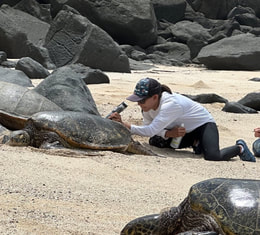Career Spotlights

Shelbie Ishimaru
How did you find yourself in conservation? Who (or what) is your biggest inspiration in committing to this field?
My home and childhood are my biggest inspirations for working within the conservation field. Being born and raised in Kailua, Oʻahu introduced me to a wide array of endemic flora and fauna, and cultivated my passion for ecology and conservation. Surfing, swimming, and spending time in the ocean as a child allowed me to be immersed in nature and drove my passion for marine biology. Within my undergraduate degree, I followed my conservation interests and participated in NOAA Pacific Island Fisheries Science Center’s Pacific Young Scientist Opportunity (PYSO). As a PYSO intern I discovered my passion in sea turtle conservation, which led me to my current field camp assistant position and drives my aspiration to pursue a PhD where I will study honu population assessment at the University of Hawaiʻi, Mānoa.
Describe a typical work week or work day.
As a marine turtle field research assistant, I work in a small team to support a wide array of tasks related to our field season. In the spring we prepare for field camp by packing our work gear, food, and water. We also review cultural, wildlife, and safety protocols to gain a better understanding of our species and study site. Finally to prepare we participate in first aid, CPR, small boat, and wildlife handling training to allow us to have a safe and successful season. We typically spend the whole summer conducting fieldwork in the remote Papahānaumokuākea Marine National Monument. The duration of field camps changes annually but are always between 3-6 months! Within the field camp on Lalo we primarily camp on Tern Island and work in a small group of 7 individuals that is made up of 3 honu researchers and 4 monk seal researchers. As field researchers we work to achieve our scientific goals in monk seal and honu population assessment. It is important to understand honu population abundance, because honu are a genetically distinct population of green sea turtles that live within the Hawaiian Archipelago. Lalo is an important site, because approximately 90% of the honu population nests in Lalo. Honu nesting occurs in the summer, so field researchers work at Lalo during nesting season to identify nesting females and any males in the area. Our honu population assessment research includes boating between the islets of Lalo to identify individual honu on weekly surveys, identifying individual honu on daily surveys of Tern Island, applying long term tags to aid in re-identification, taking measurements of honu, and taking skin samples for genetic analyses. Once we finish our scientific research, we spend the last week of fieldwork breaking down camp. Then in the fall we get back to Oʻahu where we finish out our season by cleaning field gear and entering the data we collected into the NOAA sea turtle database.
What is your most favorite or valuable memory working in the conservation field?
My most valuable memory was participating in a five month field camp this summer where I worked in Lalo (also known as French Frigate Shoals) within the Papahānaumokuākea Marine National Monument. The Papahānaumokuākea Marine National Monument is such an important ecological and cultural location. It was my first field season and I am grateful for the opportunity to be able to visit and learn from this special place. After supporting analytical research on honu for two years, it was exciting to work hands-on with a species I am so passionate about. As I aspire to research honu abundance using computational methods within a PhD, this field opportunity provided insight into field data collection and allowed me to have a well-rounded understanding of the data I plan to analyze. Along with honu and data collection, I enjoyed learning more about monk seals, watching seabirds, stargazing, and allowing myself to become fully immersed in nature.
What is conservation to you?
To me, conservation is the stewardship of endemic species and our natural resources so ourselves and our future generations can enjoy them. When thinking about meeting conservation goals, I also like to utilize NOAA’s mission of science, service, and stewardship. It is important that we support sound science to understand the resources we want to protect, conduct outreach to share our findings with the local community, and finally work together in our community to be stewards by implementing strategies to conserve our natural resources.
What advice do you have for students or emerging professionals?
There are so many avenues and specialties within the conservation workplace! Find your niche in conservation by identifying some of your other interests, like public speaking, physical activity, art, or biology. There are so many jobs within conservation and each serves a vital role in conducting sound science and sharing findings with our community! Educators, field researchers, data analysts, graphic designers, lab technicians, and communication specialists are just a few examples of jobs that fit within the conservation realm. After identifying some interests, participate in internships, take classes on a subject of interest, or participate in volunteer opportunities to begin your conservation career!
